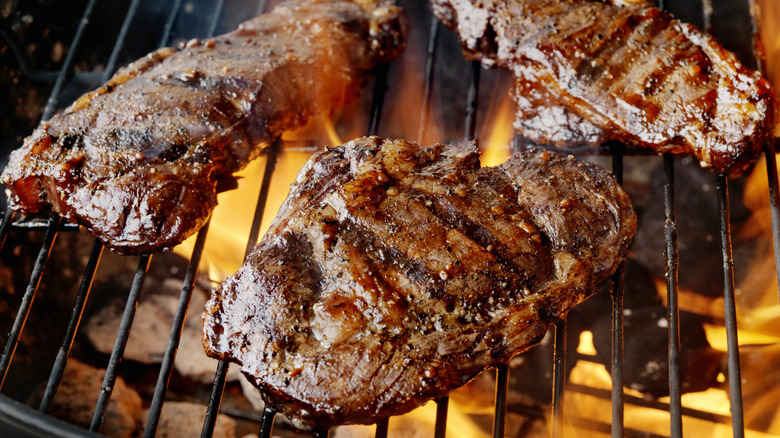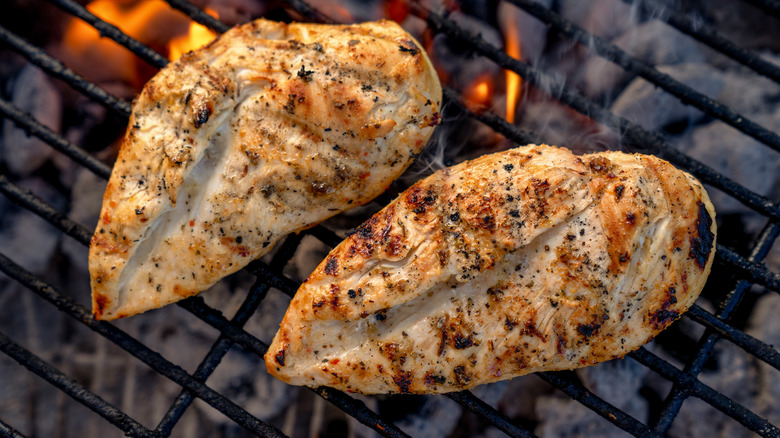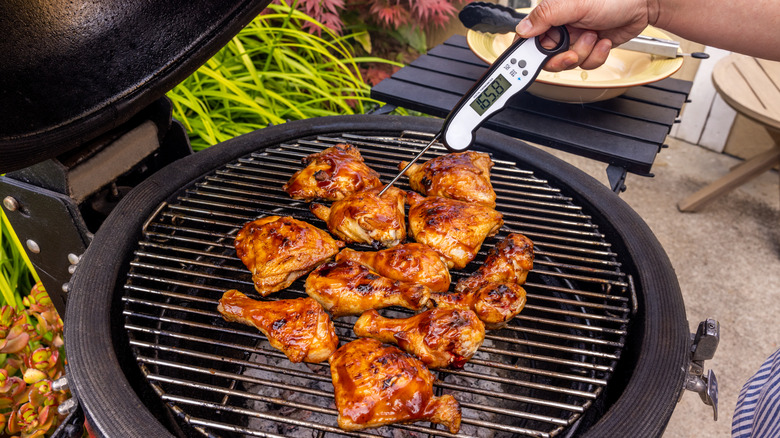Why You Should Never Put Meat On The Grill Straight From The Fridge
When hosting a summer barbecue, timing is everything. This is especially true when it comes to your grilling technique, as the temperature of the meat you're cooking can make a big difference to the final product. That's why you should always remove steak, chicken, and other meats from the refrigerator and let them rest at room temperature before grilling them.
Placing a refrigerated piece of meat directly onto the grill will have quite a few unwanted outcomes. For instance, juices within the meat will still be congealed right out of the fridge, which means they won't react appropriately to the heat. That can deprive you of the desired juiciness when it comes to grilling meat, which makes for a tougher texture and a smaller cut of meat thanks to shrinkage. Additionally, a cold cut of meat won't cook evenly. Because the center will be a lower temperature than the exterior, you run the risk of burning the outer portion while leaving the interior portion cooler than you'd like.
How to ensure that meat cooks evenly on the grill
To ensure meat is as tender and juicy as it can possibly be, remove it from the refrigerator and allow it to sit at room temperature for at least 15 to 20 minutes prior to grilling. Doing so will ensure that the meat is at an even temperature throughout, which creates a more tender, juicy texture and prevents shrinkage when cooking. Once meat is primed and ready for the grill, you'll next need to consider proper cooking times and temperatures.
Keep in mind that different types of meat will require more or less time on the grill to achieve the desired outcome. For instance, fish filets need at least three minutes on each side, while steak can range from four to 10 minutes on each side depending on its thickness. As for chicken breasts, they'll need up to six minutes per side to ensure doneness. If you're cooking wings on the grill, expect a longer cook time of up to 30 minutes.
How to tell whether meat is done
Seasoned home chefs may rely on the appearance of meat when deciding whether it's ready to eat, but a meat thermometer is your best friend when determining whether a piece of meat has finished cooking. According to the USDA, all poultry must reach an internal temp of 165 degrees Fahrenheit, while raw pork and beef must be 145 degrees Fahrenheit to ensure safety. As for ground meats (with the exception of poultry), the minimum safe internal temp is 160 degrees Fahrenheit.
You should also be aware of the best practices when it comes to using a meat thermometer. Insert the thermometer probe into the thickest area of the meat and leave it in place for about ten seconds. Try to avoid areas with bone or gristle, as these can affect the accuracy of the reading. Also, leave the cut of meat on the grill as you measure it to get the most accurate temperature. These tips ensure cuts of meat are perfectly cooked and safe for consumption to ensure an enjoyable summer feast.


